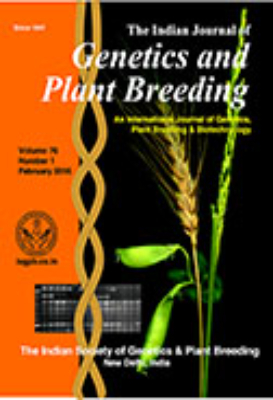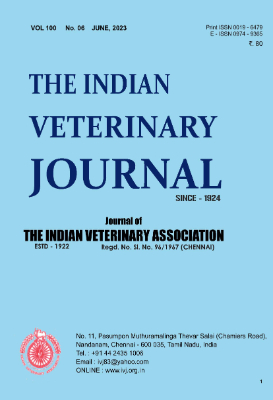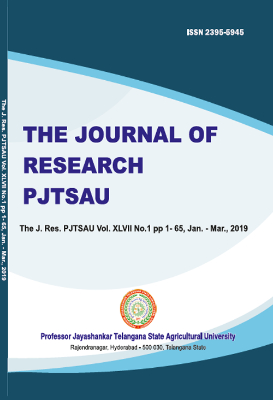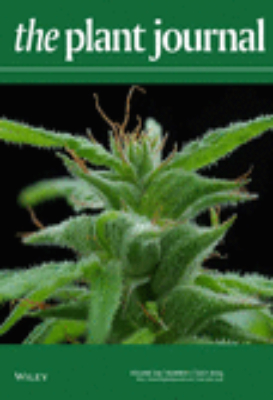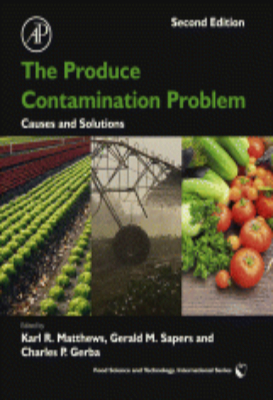Agricultural Science
The Evolution of Plant Physiology
"Coupled with biomechanical data, organic geochemistry and cladistic analyses utilizing abundant genetic data, scientific studies are revealing new facets of how plants have evolved over time. This collection of papers examines these early stages of plant physiology evolution by describing the initial physiological adaptations necessary for survival as upright structures in a dry, terrestrial environment. The Evolution of Plant Physiology also encompasses physiology in its broadest sense to include biochemistry, histology, mechanics, development, growth, reproduction and with an emphasis on the interplay between physiology, development and plant evolution. Key Features. Contributions from leading neo- and palaeo-botanists from the Linnean Society. Focus on how evolution shaped photosynthesis, respiration, reproduction and metabolism.. Coverage of the effects of specific evolutionary forces -- variations in water and nutrient availability, grazing pressure, and other environmental variables"
The Exergy Method of Thermal Plant Analysis
The Exergy Method of Thermal Plant Analysis aims to discuss the history, related concepts, applications, and development of the Exergy Method - analysis technique that uses the Second Law of Thermodynamics as the basis of evaluation of thermodynamic loss. The book, after an introduction to thermodynamics and its related concepts, covers concepts related to exergy, such as physical and chemical exergy, exergy concepts for a control method and a closed-system analysis, the exergy analysis of simple processes, and the thermocentric applications of exergy. A seven-part appendix is also included. Appendices A-D covers miscellaneous information on exergy, and Appendix E features charts of thermodynamic properties. Appendix F is a glossary of terms, and Appendix G contains the list of references. The text is recommended for physicists who would like to know more about the Exergy Method, its underlying principles, and its applications not only in thermal plant analysis but also in certain areas.
The Genesis and Classification of Cold Soils
The Genesis and Classification of Cold Soils exposes the processes involved in the development of the principal kinds of soils that occur in cold regions and introduces readers to the classification of those soils. The book uses the terminologies and concepts of the description of soils provided by the Soil Taxonomy of the United States. Topics covered in the book include aspects of temperature relationships in cold soils; effects of freezing temperatures on the soil properties; the salient features of the U.S. Soil Taxonomy system; and the taxonomies of Canada, the U.S.S.R., and The Food and Agriculture Organization (FAO). Pedologists, agriculturists, engineers, and researchers will find the book insightful.
The Indian Journal of Agricultural Sciences
A journal devoted to experimental agriculture and abstracted by all the major abstracting services. It includes articles on cytology, genetics, breeding, agronomy, soil science, horticulture, water use, microbiology, plant diseases and pest, agricultural engineering, economics and statistics with emphasis on original articles, from India and countries having similar agricultural conditions.
The Indian Journal of Genetics and Plant Breeding
Focus and Scope The Indian Journal of Genetics and Plant Breeding is a periodical for the publication of records of original research in all branches of genetics, plant breeding and cytology, including human genetics, molecular biology and biotechnology, and other cognate sciences of sufficient importance and of such a character as to be of primary interest to the geneticist and plant breeders. Publication Frequency THe journal is published quarterly. Open Access Policy This journal provides immediate open access to its content on the principle that making research freely available to the public supports a greater global exchange of knowledge. Sponsors
The Indian Veterinary Journal
The Indian Veterinary Association (IVA) is the apex organization of more than 65,000 veterinarians of the country spread over from Kashmir to Kanyakumari and Gujarat to Nagaland. Every State and UT has its own veterinary association, which is affiliated to this apex parent body. The Indian Veterinary Journal (IVJ) is the official organ of IVA and offices of both IVA and IVJ are located at No. 7/11, Pasumpon Muthuramalinga Thevar Salai, (Chamiers Road) Nandanam, Chennai 600 035. IVJ has a history of more than ninety-eight years and is being published from 1924 onwards. The Indian Veterinary Journal, popularly known as IVJ among veterinarians is a monthly periodical of international status devoted to the cause of updating knowledge of the of veterinarians with its research and clinical articles. It is a monthly journal with twelve issues in a year with ISSN (Print): 0019-6479; ISSN (online): 0974-9365. Website of this journal is http://www.ivj.co.in & https://epubs.icar.org.in/index.php/IVJ . The Journal publishes original work in veterinary medicine, animal health production, veterinary clinical subjects and allied disciplines such as Dairy development, livestock and poultry husbandry etc., The Journal is of particular importance to field veterinarians, veterinary faculty, veterinary practitioners, researchers, veterinarians from industry and Under graduate, Post graduate and doctoral students from universities of Veterinary & Animal Sciences. The Indian Veterinary Journal has an editorial board comprising of members at the level of Vice Chancellors of the leading Veterinary Universities and IVA president and members representing various states in India. In addition an exclusive International Editorial Advisory Board (IEAB) functions with members from overseas universities/Institutes from United States, United Kingdom, Australia, Hong Kong, Vietnam and Bangladesh.
The International Cocoa Trade
"An overview of the history of cocoa, the factors affecting its production and consumption as well as how the trade is conducted, various risks mitigated, and by whom. The International Cocoa Trade is a work designed to inform all on the subject of cocoa and an essential guide for those involved in its trade.Dr J. Vingerhoets, Executive Director, ICCOCocoa is a valuable commodity, and the cocoa trade involves many different parties from growers and exporters through dealers and factories to those trading futures and options and the banks they deal with. The International Cocoa Trade provides an authoritative and comprehensive review of the cocoa trade at the beginning of the twenty-first century, and the main factors that drive and affect that business.The opening chapter of the third edition examines the history and origins of the international cocoa trade, and its recent developments. The agronomics of cocoa production are discussed in chapter two whilst chapter three deals with the environmental and practical factors affecting cocoa production. Chapters four, five and six cover issues around the export and trading of physical cocoa, including the actuals market, the physical contracts used and the futures and options markets. In chapter seven, the international consumption and stocks of cocoa are reviewed with chapter eight discussing the issue of quality assessment of cocoa beans for international trade. Finally, chapter nine focuses on the end product, examining the processing of cocoa beans and the manufacture of chocolate. Updated appendices provide copies of some of the most important documents used in the cocoa trade, including contracts, sale rules and world production statistics.This comprehensively updated third edition of The International Cocoa Trade ensures its continued status as the standard reference for all those involved in the production consumption and international trading of cocoa. Key Features. Provides an authoritative and comprehensive review of the cocoa trade at the beginning of the twenty-first century, and the main factors that drive and affect that business. Examines the history and origins of the international cocoa trade, and its recent developments featuring a discussion of environmental and practical factors affecting cocoa production. Explores issues concerning the export and trading of physical cocoa, including the actuals market, the physical contracts used and the futures and options markets
The Journal of Research, PJTSAU
Focus and Scope The Journal consists of research publications in the field of agriculture and allied sciences authored by scientists, students and other eminent agriculture scientists on relevant and time specific research. The Journal publishes National as well as International research papers. Peer Review Process Journal has specific peer review policy for evaluating the research paper before publishing. It includes following steps First screening by Chief Editor of Journal. If accepted it is sent to concerned subject reviewers(2). And then it is sent to author for necessary modifications. After receiving from author it is sent for Language (English) screening. The final screening is done by Chief Editor and accepted for publication. The total process is completed between 30-45 days and four reviewers are involved in accepting the paper for publication. Publication Frequency
The Laboratory Fish
This reference series provides researchers of all kinds with comprehensive practical information on different species of laboratory animals, for daily laboratory use. Each title in the series in devoted to a different species. and draws together all available data in one easily accessible source. Each has similar format, with sections on the strains available, their husbandry and special diets. This leads to sections on gross anatomy, endocrinology and reproduction, followed by more detailed sections on neuroanatomy, vasculature, cell biology and histology of particular organs and structures, and a section on molecular biology. High quality illustrations are included throughout, with copious color histology microphotographs. Key Features @introbul:Key Features@bul:* Comprehensive reference source for anybody working with laboratory fish* 2-color, user-friendly format* Copious high quality illustrations included throughout* Color plate section* Glossary* Appendix of useful addresses
The Laboratory Mouse
Among animals used in research, teaching and testing, mice are now widely recognized as the most important model for human diseases and disorders. They comprise the majority of all experimental mammals and tend to be the model of choice used for research into many diseases/disorders including cancer, heart disease, asthma, Alzheimers, Down syndrome, deafness, osteoporosis, obesity, diabetes and even mental health research. Additionally the laboratory mouse continues to play a widely publicized vital role in the human genome project.One of the most time-consuming activities in research laboratories is looking up information specific to the species or strain of animal being used. This book, part of the highly successful Handbook of Experimental Animals series, allows the user quick access to any point of interest on the mouse as an experimental model.
The Laboratory Primate
A volume in the Handbook of Experimental Animals series, The Laboratory Primate details the past and present use of primates in biomedical research, and the husbandry, nutritional requirements, behaviour, and breeding of each of the commonly used species. Practical information on regulatory requirements, not available in other texts, is covered. Sections on experimental models cover the major areas of biomedical research, including AIDS, cancer, neurobiology and gene therapy. Assisted reproductive technology, tissue typing, and minimum group sizes for infectious disease/vaccine studies are also included.
The Laboratory Rat
This reference series will provide all researchers using laboratory animals with comprehensive practical information on the various species. Each title in the series is devoted to a particular species, and draws together all available data in a "one-stop", easily accessible source. Each has similar format, with sections on the strains available, their husbandry, and special diets. Also included are sections on gross anatomy, endocrinology, and reproduction, followed by more detailed sections on neuroanatomy, vasculature, cell biology, and histology of particular organs and structures, and a section on molecular biology. High quality illustrations are included throughout and a color plate section is provided. A glossary, list of equipment suppliers, and "Quick Reference Section" are added features. The "Quick Reference Section" brings together all tables from the text, allowing readers to find data swiftly. The first volume in The Handbook of Experimental Animals Series, The Laboratory Rat, provides researchers in academia and industry using laboratory animals with comprehensive, practical information on the species. The Laboratory Rat has been divided into eight sections dealing with:* Strains and their selection for research* Housing and maintenance* Pathogens and diseases* Breeding and reproduction* Anatomy* Physiology* Procedures, including experimental surgery* Emerging techniques, including genetic engineering and molecular technology
The Laboratory Rat: Second Edition 2006
The Laboratory Rat, Second Edition features updated information on a variety of topics including: rat genetics and genomics, both spontaneous and induced disease; state-of-the-art technology for housing and husbandry; occupational health, and experimental models. A premier source of information on the laboratory rat that will be of interest to veterinary and medical students, senior graduate, graduate students, post-docs and researchers who utilize animals in biomedical research.
The Microbiological Quality of Food
"The Microbiological Quality of Food: Foodborne Spoilers specifically addresses the role of spoilers in food technology and how they affect the quality of food. Food spoilers represent a great challenge in food quality, determining the shelf-life of many products as they impact consumer acceptability of taste, texture, aroma, and other perceptions. Divided into four sections, the first section defines microbial spoilage of food, with special emphasis on methods for the evaluation of spoiling phenomena and the status of their regulatory framework, examining both existing regulations and possible gaps. The second section examines spoiling microorganisms, covering a range of common spoilage microorganisms, including pseudomonas, yeasts, and molds and spore formers, as well as less-common spoilers, including lactic acid bacteria and specific spoilage organisms in fish. The third section highlights spoiling phenomena within certain food types. Chapters cover dairy, fish, meat, and vegetables, and other products. The final section investigates emerging topics which point to future trends in the research of food spoilers. There is insight into microorganisms resistant to preservation, the role of biofilms in food quality, and the link between food safety and food spoilage, with a special emphasis on certain spoiling microorganisms which could be opportunistic pathogens. Written by an international team of leading authors, this book provides state-of-the-art coverage of this topic, which is essential to the shelf-life and quality of food. Key Features. Provides in-depth coverage of the different spoilers which cause the deterioration of foods, including less common spoilers not covered in other publications. Includes dedicated chapters covering the spoilage of specific products, making this book ideal for those working in the food industry. Presents a framework for future research in the area of foodborne spoilers"
The Molecular and Hormonal Basis of Plant-Growth Regulation
The Molecular and Hormonal Basis of Plant-Growth Regulation deals with the molecular and hormonal basis of plant-growth regulation. Topics covered range from molecular biology in plants to the structural units of DNA, DNA replication and RNA transcription, and the process of translation and protein synthesis. The use of RNA for transmission of genetic information is also discussed. This book is comprised of 16 chapters and begins with an overview of the foundations that form the basis of modern biology, followed by an analysis of DNA and its structural units. The role of enzymes in DNA replication is then examined, together with RNA transcription and protein synthesis. The next section focuses on modern aspects of hormone action and introduces the reader to the growth-regulatory hormones existing in most higher plants; the role of ribosomes in the polymerization of transfer RNA-borne amino acids; the structure and biophysical properties of the mitochondrion and the chloroplast as genetic units; and the use of antibiotics in the inhibition of synthesis of nucleic acids and proteins. This monograph will be a valuable resource for biologists, plant physiologists, teachers, and students who seek to widen their general knowledge about plant growth.
The Physiological Ecology of Woody Plants
"The efficient management of trees and other woody plants can be improved given an understanding of the physiological processes that control growth, the complex environmental factors that influence those processes, and our ability to regulate and maintain environmental conditions that facilitate growth. Key Features. Emphasizes genetic and environmental interactions that influence woody plant growth. Outlines responses of individual trees and tree communities to environmental stress. Explores cultural practices useful for efficient management of shade, forest, and fruit trees, woody vines, and shrubs"
The Plant Cell Wall
International Series of Monographs on Pure and Applied Biology: The Plant Cell Wall, Volume 2 is a four-chapter text that covers the botanical aspects of cell wall. This book specifically discusses the cell types and cell walls in vascular plants, as well as the classification and constitution of cell wall. This book deals first with the fractionation, biosynthesis, components, formation regulation, and breakdown of cell wall. These topics are followed by discussions on cell wall polysaccharides, lignin structures, cell wall changes during cell growth, and the analysis of the wall-lysing enzymes. Other chapters examine the types and chemical components of cell wall carbohydrates and the surface processes in lignin polymer formations. A study of the phylogenetic aspects of lignins and lignin synthesis is presented. A chapter is devoted to the classification and features of plant species. The remaining chapter focuses on the non-vascular plants, protista, and metazoa. The book can provide useful information to scientists, botanists, students, and researchers.
The Plant Seed
The Plant Seed: Development, Preservation, and Germination presents papers delivered on the symposium on plant seed, held at the University of Minnesota in 1978. The volume discusses the development, preservation, and germination of the plant seed. The topics of this compendium focus on various aspects of the plant seed. The first group of papers describes genetic, hormonal, and molecular events associated with seed development, with particular attention given to the molecular biology of storage protein formation; the second group of papers examines the physiological and genetic aspects of germplasm preservation. The final group of papers examines the molecular aspects of seed germination. The book will be of interest to botanists, biologists, plant breeders, plant physiologists, plant pathologists, and geneticists.
The Produce Contamination Problem: 2009
Understanding the causes and contributing factors leading to outbreaks of food-borne illness associated with contamination of fresh produce continues to be a worldwide challenge for everyone from the growers of fresh-cut produce through the entire production and delivery process. Additionally researchers both at universities and in government agencies are facing an increased challenge to develop means of preventing these foodborne illness occurrences. The premise of this book is that when human pathogen contamination of fresh produce occurs, it is extremely difficult to reduce pathogen levels sufficiently to assure microbiological safety with the currently available technologies. A wiser strategy would be to avoid crop production conditions that result in microbial contamination to start. These critical, problem-oriented chapters have been written by researchers active in the areas of food safety and microbial contamination during production, harvesting, packing and fresh-cut processing of horticultural crops, and were designed to provide methods of contamination avoidance. Coverage includes policy and practices in the US, Mexico and Central America, Europe, and Japan.
The Produce Contamination Problem: 2014
"Understanding the causes and contributing factors leading to outbreaks of food-borne illness associated with contamination of fresh produce is a worldwide challenge for everyone from the growers of fresh-cut produce through the entire production and delivery process. The premise of The Produce Contamination Problem is that when human pathogen contamination of fresh produce occurs, it is extremely difficult to reduce pathogen levels sufficiently to assure microbiological safety with the currently available technologies. A wiser strategy would be to avoid crop production conditions that result in microbial contamination to start. These critical, problem-oriented chapters have been written by researchers active in the areas of food safety and microbial contamination during production, harvesting, packing and fresh-cut processing of horticultural crops, and were designed to provide methods of contamination avoidance. Coverage includes policy and practices in the United States, Mexico and Central America, Europe, and Japan. Key Features. Addresses food-borne contaminations from a prevention view, providing proactive solutions to the problems. Covers core sources of contamination and methods for identifying those sources. Includes best practice and regulatory information"
The Role of Water in Agriculture
The Role of Water in Agriculture focuses on the role of water in British agriculture. This book discusses the growing importance of hydrological science and agricultural hydrology. Organized into 14 chapters, this book begins with an overview of the problems of accurate rainfall measurement and its importance to agriculture. This text then presents a comprehensive study of the sources of error in agricultural water budgets. Other chapters consider the progress reports on two catchment studies and a report on the effect of agricultural treatments on water availability in the soil. This book discusses as well the sediment yields from forested and agricultural lands on an international basis. The final chapter deals with a summary of the discussions with conclusions and implications. This book is a valuable resource for hydrologists, geographers, meteorologists, agricultural scientists, applied biologists, plant physiologists, and pedologists. Engineers, administrators, and advisers will also find this book useful.
The Science of Grapevines
"The Science of Grapevines: Anatomy and Physiology is an introduction to the physical structure of the grapevine, its various organs, their functions and their interactions with the environment. Beginning with a brief overview of the botanical classification (including an introduction to the concepts of species, cultivars, clones, and rootstocks), plant morphology and anatomy, and growth cycles of grapevines, The Science of Grapevines covers the basic concepts in growth and development, water relations, photosynthesis and respiration, mineral uptake and utilization, and carbon partitioning. These concepts are put to use to understand plant-environment interactions including canopy dynamics, yield formation, and fruit composition, and concludes with an introduction to stress physiology, including water stress (drought and flooding), nutrient deficiency and excess, extreme temperatures (heat and cold), and the impact and response to of other organisms. Based on the authors years of teaching grapevine anatomy as well as his research experience with grapevines and practical experience growing grapes, this book provides an important guide to understanding the entire plant. Key Features. Chapter 7 broken into two chapters, now ""Environmental Constraints and Stress Physiology and Chapter 8 ""Living with Other Organisms"" to better reflect specific concepts. Integration of new research results including:. Latest research on implementing drip irrigation to maximize sugar accumulation within grapes. Effect of drought stress on grapevines hydraulic system and options for optimum plant maintenance in drought conditions. The recently discovered plant hormone strigolactones and their contribution of apical dominance that has suddenly outdated dogma on apical dominance control. Chapter summaries added. Key literature references missed in the first edition as well as references to research completed since the 1e publication will be added"
The Science of Grapevines: Anatomy and Physiology
Written by a recognized expert and based on his experience in teaching the subject to students with a variety of educational backgrounds, The Science of Grapevines: Anatomy and Physiology is the only book to comprehensively explore the physiology of the grapevine as it occurs around the world.While other books have focused on the vines of specific regions, the globalization of the wine industry and the resulting increase of lands around the world being used for grapevine cultivation have left a gap in information. This book addresses not only the specific issues and concerns of grapevines from regions around the world, but includes important emerging topics such as global climate change, water relations, temperature effect and more. Key Features * Provides global coverage of grapevines, including the regional differences, similarities, challenges and potential changes* Avoids jargon while bringing the reader into this important aspect of the wine industry * Classroom proven by a leading expert in grapevine anatomy
The Soil Mites of the World: Volume 1
Soil mites are of great biological importance both in natural and in cultivated soils. Recently much attention has been paid to them especially because of their sensitivity to a number of chemicals used in agriculture. Of the soil mites, the Oribatids represent the largest number of both individuals and species. Unfortunately, the study of Oribatids has been greatly hampered by the lack of modern reference works from which they can be identified, and it was this great lack that stimulated the authors to launch this new series of books. The first volume, after a short morphological treatment, gives the method of collection, preparation, and mode of study of prepared specimens. The work is designed to discuss critically all recognizable species and is amply complemented with differential diagnoses and entirely new figures from supercohorts down to species. The book also includes an index of taxa.






